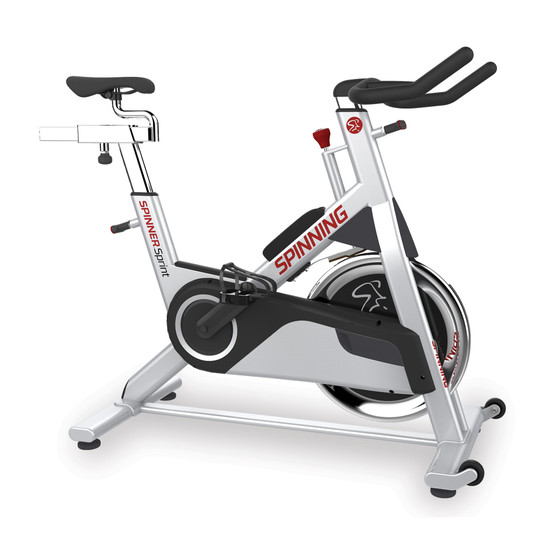Upright Bike VS Spinning Bike?
Comparing Upright Bikes vs Spinning Bikes: Which One is Right for You?
## Introduction to Upright Bikes and Spinning Bikes
When it comes to indoor cycling, two popular options are upright bikes and spinning bikes. These stationary bicycles offer a convenient way to exercise from the comfort of your own home or at the gym. While they may seem similar at first glance, there are key differences between the two. In this article, we will explore the features, benefits, and considerations of both upright bikes and spinning bikes to help you determine which one is the right choice for your fitness goals.
Differences between Upright Bikes and Spinning Bikes
One of the main differences between upright bikes and spinning bikes lies in their design. Upright bikes resemble traditional bicycles, with a seat that is positioned directly above the pedals. They often feature a larger, more comfortable seat, making them suitable for longer workouts. On the other hand, spinning bikes are designed to mimic the experience of outdoor cycling. They typically have a smaller seat and handlebars that are positioned lower and farther forward, encouraging a more aggressive riding posture.
Another key difference is the flywheel mechanism. Upright bikes usually have a heavier flywheel, which provides a smoother and more consistent pedaling motion. This can be beneficial for those who prefer a steady and controlled workout. Spinning bikes, on the other hand, have a lighter flywheel, which allows for a more dynamic and intense workout. The lighter flywheel enables faster acceleration and deceleration, simulating the feeling of riding on various terrains.
Benefits of using an Upright Bike
Upright bikes offer several benefits that make them a popular choice for many fitness enthusiasts. First and foremost, they provide a low-impact workout that is gentle on the joints, making them suitable for people of all ages and fitness levels. The upright position also helps to engage the core muscles, promoting better posture and stability. Additionally, the larger and more comfortable seat of an upright bike allows for longer workout sessions, making it ideal for those who enjoy extended cardio sessions or endurance training.
Another advantage of using an upright bike is the versatility it offers. Many models come equipped with various resistance levels, allowing you to customize the intensity of your workout. This makes it suitable for beginners who are just starting their fitness journey, as well as experienced cyclists who are looking for a challenging workout. Upright bikes also often come with built-in workout programs and tracking features, allowing you to monitor your progress and stay motivated.
Benefits of using a Spinning Bike
While both upright bikes and spinning bikes offer an effective cardiovascular workout, spinning bikes have their own unique benefits. One of the main advantages of using a spinning bike is the high-intensity interval training (HIIT) it provides. The lighter flywheel and more aggressive riding position allow for quick accelerations and intense sprints, making it an excellent choice for those who want to maximize their calorie burn in a shorter amount of time.
Spinning bikes are also known for their ability to simulate outdoor riding conditions. The adjustable resistance levels and the ability to stand up and pedal give you the opportunity to mimic the feeling of climbing hills or sprinting on flat terrain. This can help improve your overall cycling performance and build strength and endurance. Additionally, spinning classes often incorporate music and motivational instructors, creating a fun and energetic atmosphere that can help keep you motivated throughout your workout.
Factors to consider when choosing between an Upright Bike and a Spinning Bike
When deciding between an upright bike and a spinning bike, it's important to consider your fitness goals, preferences, and budget. If you are looking for a low-impact workout that allows for longer sessions and customizable resistance levels, an upright bike may be the better choice for you. On the other hand, if you are seeking a more intense and dynamic workout that simulates outdoor cycling conditions, a spinning bike may be the right option.
It's also worth considering the space you have available. Upright bikes tend to have a larger footprint and may require more floor space, while spinning bikes are usually more compact and easier to store. Additionally, take into account your budget as spinning bikes can often be more expensive than upright bikes.
Upright Bike vs Spinning Bike: Which one is better for weight loss?
Both upright bikes and spinning bikes can be effective for weight loss, but the right choice depends on your personal preferences and fitness level. Upright bikes provide a low-impact workout that is gentle on the joints, making it suitable for individuals who are overweight or have joint issues. The ability to customize the resistance levels allows you to gradually increase the intensity of your workout as your fitness level improves, helping you burn calories and shed pounds over time.
On the other hand, spinning bikes offer a more intense cardiovascular workout, which can result in a higher calorie burn. The high-intensity interval training (HIIT) provided by spinning bikes has been shown to be effective for weight loss. The fast-paced and dynamic nature of spinning classes also helps to keep your heart rate elevated, maximizing your calorie burn during and after your workout.
Upright Bike vs Spinning Bike: Which one is better for cardiovascular fitness?
Both upright bikes and spinning bikes can improve cardiovascular fitness, but they do so in different ways. Upright bikes provide a steady and controlled workout, allowing you to maintain a consistent pace for an extended period of time. This can be beneficial for building endurance and improving cardiovascular health. The ability to adjust the resistance levels also allows you to increase the intensity of your workout as your fitness level improves.
Spinning bikes, on the other hand, offer a more dynamic and intense cardiovascular workout. The ability to accelerate and decelerate quickly, combined with the option to stand up and pedal, helps to elevate your heart rate and challenge your cardiovascular system. The high-intensity interval training (HIIT) provided by spinning bikes has been shown to improve cardiovascular fitness and increase aerobic capacity.
Upright Bike vs Spinning Bike: Which one is better for low-impact exercise?
Both upright bikes and spinning bikes offer a low-impact exercise option, but the right choice depends on your specific needs. Upright bikes provide a seated position and a larger, more comfortable seat, making them suitable for individuals with joint issues or those who prefer a more relaxed and supported workout. The smooth and controlled pedaling motion of upright bikes minimizes the impact on the knees and ankles, making them a great choice for individuals recovering from injuries or with joint sensitivities.
Spinning bikes, on the other hand, offer a more intense and dynamic workout that may not be suitable for everyone. The aggressive riding position and the option to stand up and pedal can put more stress on the joints, especially the knees and ankles. While spinning bikes can still be a low-impact option for individuals without joint issues, it's important to listen to your body and adjust the resistance and intensity level accordingly.
Upright Bike vs Spinning Bike: Which one is better for muscle toning?
Both upright bikes and spinning bikes can help tone your muscles, but they target different muscle groups. Upright bikes primarily work the lower body muscles, including the quadriceps, hamstrings, glutes, and calves. The pedaling motion engages these muscles and helps to strengthen and tone them over time. The ability to increase the resistance levels also allows you to challenge your leg muscles and promote muscle growth.
Spinning bikes, on the other hand, provide a full-body workout that engages not only the lower body muscles but also the core, arms, and upper body. The dynamic and intense nature of spinning classes requires you to engage your entire body, resulting in a more comprehensive muscle-toning workout. The option to stand up and pedal also helps to activate the muscles in your core and upper body, promoting overall strength and toning.
Conclusion and Final Thoughts
In conclusion, both upright bikes and spinning bikes offer unique benefits and can be effective tools for improving your fitness level. Upright bikes provide a low-impact and versatile workout, making them suitable for individuals of all ages and fitness levels. They are ideal for those who prefer longer, more relaxed workouts and want to focus on endurance and overall cardiovascular health.
On the other hand, spinning bikes offer a more intense and dynamic workout that simulates outdoor cycling conditions. They are a great choice for individuals who want to challenge themselves and maximize their calorie burn in a shorter amount of time. Spinning bikes are also a popular choice for those who enjoy the energetic and motivating atmosphere of spinning classes.
Ultimately, the choice between an upright bike and a spinning bike depends on your personal preferences, fitness goals, and budget. Consider factors such as the type of workout you enjoy, the space you have available, and any specific needs or limitations you may have. By carefully considering these factors, you can make an informed decision and choose the bike that is right for you.
CTA: Whether you choose an upright bike or a spinning bike, the most important thing is to find a form of exercise that you enjoy and can stick to in the long run. Remember to start slowly and gradually increase the intensity of your workouts to avoid injury. Whichever bike you choose, make sure to prioritize your safety and listen to your body. Happy cycling!


